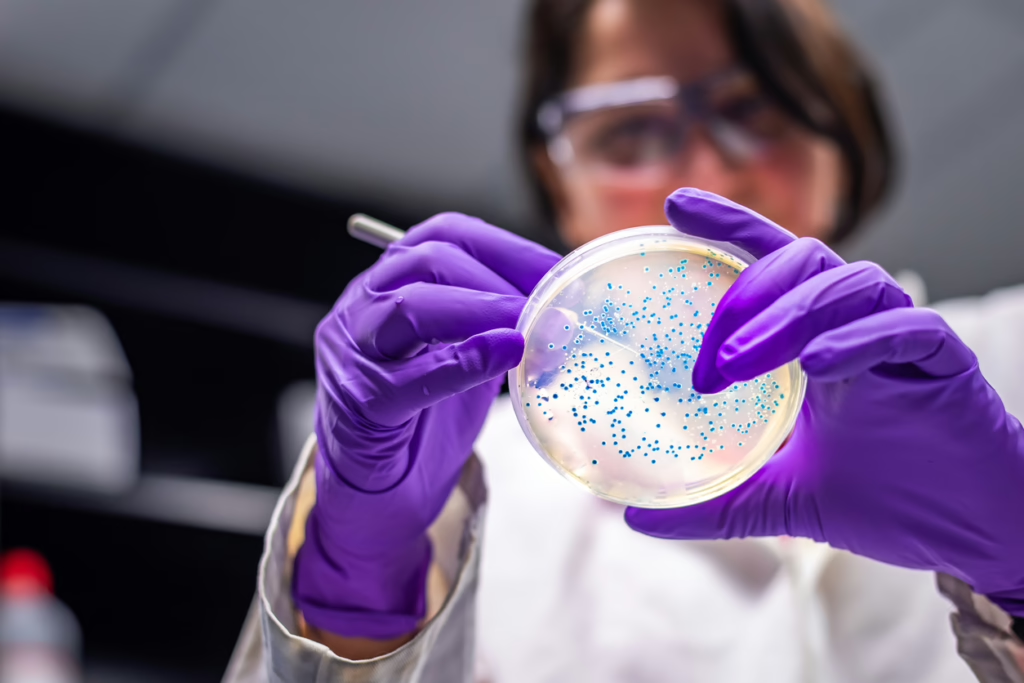
The current E. coli outbreak highlights the importance of personal and food hygiene and the vital role of public health laboratories in foodborne outbreak detection.
Recent news cycles have reported on an outbreak of E. coli infection linked to eating quarter pounders at McDonald’s. To date, it has been linked to 90 cases, leading to 27 hospitalizations and one death. The outbreak spans a total of 13 states and appears linked to fresh slivered onions served on the burgers.
Escherichia coli (more commonly abbreviated to E. coli) is a bacteria found in the intestines. Most strains are harmless to us and are even considered a part of healthy gut bacteria that help us. However, some types of E. coli can cause illness, and one such strain is responsible for the outbreak currently under investigation. The strain causing the current outbreak is E. coli O157:H7.
Symptoms, diagnosis, & treatment
Symptoms from infection include diarrhea (which can be bloody), vomiting, stomach cramps, and fevers. These symptoms typically show up about 3 or 4 days after eating food contaminated with the bacteria. To diagnose illness caused by E. coli infection, your doctor sends a sample of your stool to a laboratory to test for the presence of E. coli bacteria.
Fortunately, most people will recover with no treatment in about a week. The most common complication is dehydration from diarrhea but some people go on to develop a more serious complication called Hemolytic Uremic Syndrome (HUS). HUS can cause the kidneys to fail and needs urgent interventions, including hospitalization.
Protecting yourself from E. coli
This is not the first outbreak of E. coli this year. Previous outbreaks have been linked to walnuts and raw cheddar cheese. Fortunately, there are some easy steps you can take to lower bacterial load and reduce your risk of getting sick with one of these outbreaks:
- Practice good hand hygiene.
- Thoroughly wash utensils and cooking surfaces.
- Rinse produce under running water before consumption, and cut or peel fruits and vegetables.
- Cook foods to a temperature high enough to kill germs.
- Promptly refrigerate raw meats, poultry, and seafood.
- Avoid thawing food on countertops.
- Separate foods that are consumed raw from raw meats, poultry, and seafood.
Public health labs, E. coli, and foodborne illness
Among other core responsibilities, public health laboratories (PHLs) form the backbone of foodborne outbreak detection and response by detecting clusters of related disease cases that may later be identified as outbreaks. The PHLs conduct foodborne disease surveillance testing for E. coli, salmonella, listeria, and other important pathogens. Learn how Primary.Health supports PHLs by leveraging our technology and laboratory partnerships to build a more resilient and effective public health lab system.
Disclaimer: This blog content and linked materials are not intended as individual medical advice, diagnosis or treatment, and should not be considered as such. Any readers with medical concerns should contact a licensed healthcare provider. This blog is provided for informational purposes only.
